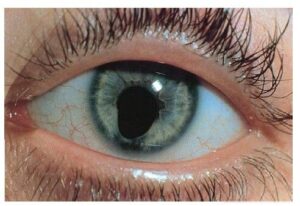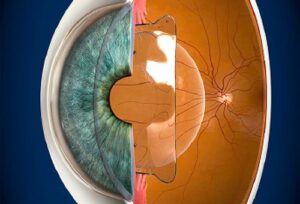
Anushka Super Speciality Eye Hospital
Call: 90044 44422 / 99213 44422 | Timings : 8.30 a.m to 5.30 p.m (Mon-Sat) | Add: Shri Swami Samarth Soc, Kaneri Dhamankar Naka, Bhiwandi




Accredited for Quality Care
Blue Light Glasses: Do We Really Need Blue Cut Lenses?
anushka
29 September 2025
If you’re scrolling through your phone late at night and suddenly an ad pops up for “blue cut glasses,” you’re not alone. Nowadays every optical shop, every online portal, even chemist shops are pushing these lenses. They’re marketed as a must-have if you use computers, mobiles, or TV. But the big question is—do we really need them? Or is it just another eyewear trend?
Let’s break it down slowly. I’ll talk about what blue light is, what research actually says, who might benefit from blue cut lenses, and who probably doesn’t. And of course, we’ll touch on eye health tips that are far more important than just buying another pair of glasses.
What is Blue Light Anyway?
Blue light is part of the visible light spectrum. Sunlight has all colors, from red to violet, and blue is just one of them. Its wavelength is short, energy is high. That’s why it scatters more in the atmosphere, making our sky look blue.
But these days, the concern is not the natural blue light from the sun. It’s the artificial blue light that comes from LED lights, smartphones, laptops, tablets, TVs. Basically, all those screens we stare at for hours.
So people wonder—does this blue light harm eyes?
The Common Claims About Blue Light
- It causes eye strain
- It damages retina in the long run
- It disturbs sleep by reducing melatonin
- Blue cut glasses protect and reduce headaches
Sounds scary, right? But let’s be honest—science is not that simple.
What Science Says
Eye strain
When you spend hours on a computer, your eyes feel tired, watery, sometimes burning. Most people assume it’s because of blue light. But in reality, it’s usually due to digital eye strain—caused by reduced blinking, glare, and poor posture. Not necessarily blue light itself.
Retinal damage
So far, no strong clinical evidence proves that blue light from screens causes permanent retinal damage in humans. Most studies that show harm were done in labs with extremely high-intensity blue light—not comparable to your mobile.
Sleep disturbance
This one is real. Blue light, especially in the evening, can affect the body clock. It suppresses melatonin, the hormone that makes you sleepy. That’s why scrolling Instagram at midnight can keep you awake longer.
So, Do Blue Cut Glasses Help?
Let’s not be too dramatic. Here’s the balanced view:
- They may help reduce glare and improve comfort for some people. Especially those who work long hours in front of screens.
- They might help in better sleep quality if used in the evening.
But… they’re not magic shields. They don’t guarantee protection from eye disease. They’re not a replacement for proper eye care.
Who Should Consider Them?
- Office workers who spend 8–10 hours on screens
- Gamers, designers, IT professionals who work at night
- People who complain of glare, headaches, or eye strain despite having correct spectacles
- Teenagers who spend late nights on phones (although honestly, reducing screen time is better than any lens)
Who Probably Doesn’t Need Them?
- Kids under 12 (better to limit screen time rather than give glasses)
- People who use screens only a few hours daily
- Those buying just because it’s trendy
What’s More Important Than Blue Cut Glasses
- Follow the 20-20-20 rule → every 20 minutes, look 20 feet away for 20 seconds.
- Blink more often → screens reduce natural blinking.
- Use proper lighting → avoid glare from overhead lights.
- Limit screen time before bed → at least 1 hour gadget-free.
- Maintain correct posture → screen at eye level, about arm’s distance away.
- Get eyes checked regularly → especially if you already have refractive error.
The Indian Market Scene
In India, optical shops love to push blue cut lenses because margins are high. A normal anti-reflective lens might cost ₹1500, but a “blue cut AR lens” may go for ₹2500–3000. Online too, you’ll see them marketed aggressively.
That doesn’t mean they’re useless. But patients should know the difference between marketing hype and real medical need.
What Doctors Say
Many ophthalmologists and optometrists agree:
- Blue cut glasses can provide comfort, but they’re not mandatory for everyone.
- Eye strain has more to do with screen habits than blue light itself.
- Good sleep hygiene and regular breaks are more effective than any coating.
Prescription Example
If you need spectacles for power (like myopia, hypermetropia, or astigmatism), you can choose to add a blue cut coating. It’ll usually be written as “Blue Block AR coating” along with your SPH, CYL, and AXIS.
But if you don’t have any power, you can still get plano blue cut glasses (zero number). Many young professionals wear these for comfort.
Final Word: Do You Need Blue Cut Lenses?
Let’s keep it simple.
- If you’re on screens for hours, yes, they may help reduce glare and eye strain.
- If you’re having sleep issues due to late-night scrolling, blue cut may help a bit—but reducing screen time will help more.
- If your optician is pushing them too hard, remember it’s partly business too.
So the answer is: blue cut lenses are helpful for some, optional for many, and unnecessary for a few. Not compulsory.
Key Takeaway
Take care of your eyes the natural way—less screen time, more outdoor time, proper lighting, regular eye exams. Glasses are tools, not miracles. Blue cut lenses are one more option, not a must-have for everyone.
At the end of the day, your eyes need rest more than coatings.
Recent Posts


